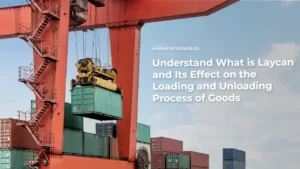Benefits, Timing, and How to Get SOC Containers
Posted on July 1, 2024 by Nur Wachda Mihmidati

In the ever-growing digital era, security and efficiency in data management are very important for organizations. One solution that has emerged to address these challenges is the use of SOC containers. By integrating system and organization controls (SOC) into a container environment, organizations can ensure that their applications not only function properly, but also adhere to strict security and compliance standards. This TransTRACK article will explain what SOC containers are, their benefits, and when they should be used, as well as how to implement them in your business practices.
What is a SOC Container?
SOC (System and Organization Controls) Container is a concept that combines system and organization controls in the context of information technology, especially in data management and storage through containerization.
What are the Advantages of Using SOC Containers?
Using SOC containers has various advantages, especially in terms of flexibility, control, and cost efficiency. Here is a more detailed explanation of these advantages:
Greater Flexibility
- Portability: Containers can be run in a variety of environments, from developer laptops to production servers, without configuration changes. This enables faster and more consistent development and testing.
- Scalability: Containers can be easily deployed and managed using container orchestration such as Kubernetes, allowing applications to be horizontally scaled as needed.
- Application Isolation: Each container runs independently, which allows different applications and application versions to run on the same machine without conflict.
Full Control over Containers
- Enhanced Security: With SOC Container, organizations can implement strict security controls according to SOC standards, including encryption, identity and access management, and comprehensive monitoring and logging.
- Easy Configuration and Management: Containers allow for consistent and repeatable environment configuration, easing management and oversight.
- Implementation of Best Practices: With SOC standards, organizations can ensure that best practices in security, compliance, and auditing are implemented across the container environment.
More Efficient Costs
- Optimal Resource Usage: Containers enable more efficient use of system resources compared to virtual machines (VMs), as they share the kernel of the host operating system.
- Reduced Management Overhead: Automation of container management with tools like Docker and Kubernetes reduces the need for manual intervention, saving time and costs.
- Scalability Based on Needs: With the ability to quickly increase or decrease the number of containers, organizations can manage operational costs more effectively, paying only for resources that are actually used.
Using SOC Containers provides organizations with advantages in terms of flexibility, control, and cost efficiency while ensuring that security and compliance standards are met.
When to Use SOC Containers?
Using a SOC Container can be very beneficial in certain situations. Here are some contexts where using SOC Containers is highly recommended:
Specialized Projects
In special projects, such as software development and testing, containers provide a consistent and repeatable environment, reducing issues that often arise due to environmental differences. This is also important for projects that have strict compliance requirements, such as SOC 2, where controls and security must be met. Projects with distributed teams across multiple locations also benefit from containers, as they allow all team members to work within the same environment, thus improving collaboration.
Specific Delivery Route
In specific delivery routes, SOC Container supports Continuous Integration and Continuous Deployment (CI/CD) pipelines, enabling more efficient test automation and deployment. Containers are also ideal for deployment in various cloud or hybrid environments, providing the necessary portability. In a microservices architecture, each service can run in a separate container, making it easy to manage and scale.
High Frequency of Use
Additionally, for applications with a high frequency of use, SOC Containers enable rapid scaling when facing traffic spikes. If applications require regular maintenance or updates, containers facilitate quick rollback and deployment without significant downtime. In DevOps and Agile environments, the use of SOC Containers supports the speed and flexibility needed to respond to changes and iterate quickly.
How to Get a SOC Container?
To get a SOC Container, there are a few steps you can follow:
First, evaluate your organization’s specific needs regarding compliance and system controls. Identify relevant SOC standards, such as SOC 1 or SOC 2, and determine the controls that need to be implemented in your container environment.
Next, choose the right container platform, such as Docker or Kubernetes, and ensure that your chosen infrastructure supports SOC implementation. Then, be sure to develop and implement appropriate security policies, including identity management, data encryption, and monitoring required to meet SOC standards.
After that, consider collaborating with a service provider or consultant who has experience in SOC implementation. They can assist in designing and implementing the necessary controls and conducting audits to ensure compliance.
Finally, conduct periodic audits and evaluations to ensure that the controls and policies that have been implemented remain effective and compliant with SOC standards. With these steps, you can ensure that the SOC Container implemented can optimally meet the needs of your organization.
What is the Difference Between SOC and COC Container?
The difference between SOC (System and Organization Controls) and COC (Certificate of Conformity) Container lies in the focus and purpose of each concept.
SOC Container is concerned with system and organizational controls established to ensure security, privacy, and compliance with certain standards. SOC focuses on managing risks and controls in the services offered, and involves audits to assess the effectiveness of those controls. SOC reports are often used by organizations to provide confidence to clients and stakeholders that they adhere to best practices in data management.
On the other hand, COC Container focuses more on certifying compliance with certain standards set by agencies or regulatory bodies. COCs provide assurance that a product or service meets certain technical specifications or quality requirements. These certificates are typically used in the context of product testing and validation, ensuring that a product meets expected standards before it is marketed or used.
In short, SOC focuses more on security and compliance controls and audits, while COC is more concerned with certification and adherence to product or service specifications.
The implementation of SOC Container can provide many benefits to organizations in terms of security, efficiency, and compliance. With a standardized system and good controls, organizations can be better prepared for the challenges of managing data and technology infrastructure.
To further improve your operational efficiency, consider using TransTRACK’s Truck Appointment System. This system is designed to optimize logistics and delivery management, allowing you to schedule deliveries more effectively and increase productivity. Take advantage of this innovative solution to support your business needs!
Recent Post
Know the Function, Components, and How Electric Power Steering Works!
December 24, 2025Know the Types of Buses Based on Their Model, Size, and Capacity!
December 22, 2025Topic :
Recommended Articles

 Bahasa Indonesia
Bahasa Indonesia








